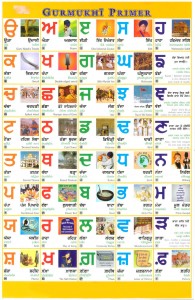
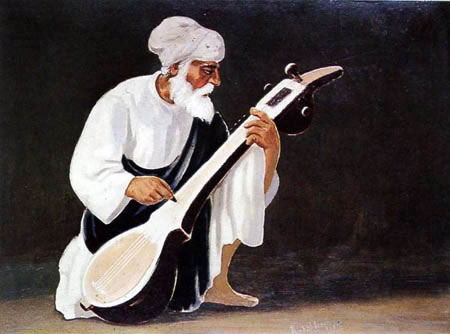 Unfortunately, and perhaps only for myself, I don’t remember the last time I visited one of my local gurdwaras and can say I was moved by the kirtan. Perhaps I feel that most (though not all) kirtan has become modernized to such an extent that it doesn’t really encompass the spiritual enlightenment that shabads were intended to. Actually, it was only after a recent visit to a Namdhari gurdwara that I truly felt that I had heard kirtan in its true element. For those of you who, like myself were unaware, Namdhari Sikhs believe that the only way to reach God is to sing in Raag, the mode of classical Indian music. For Namdhari Sikhs, the instruments they play and the style they sing in is very particular. They place a firm emphasis on rare instruments dating back to the 16th century, the time of Guru Nanak who continued the Vedic tradition of writing the holy scriptures in Raag.
Unfortunately, and perhaps only for myself, I don’t remember the last time I visited one of my local gurdwaras and can say I was moved by the kirtan. Perhaps I feel that most (though not all) kirtan has become modernized to such an extent that it doesn’t really encompass the spiritual enlightenment that shabads were intended to. Actually, it was only after a recent visit to a Namdhari gurdwara that I truly felt that I had heard kirtan in its true element. For those of you who, like myself were unaware, Namdhari Sikhs believe that the only way to reach God is to sing in Raag, the mode of classical Indian music. For Namdhari Sikhs, the instruments they play and the style they sing in is very particular. They place a firm emphasis on rare instruments dating back to the 16th century, the time of Guru Nanak who continued the Vedic tradition of writing the holy scriptures in Raag.
Gurmat Sangeet has always played a significant role in Sikh history and began in the 16th century as the musical expression of divine poetry and yet many of us have never been exposed to this form of kirtan. During our Gurus’ time, Gurmat Sangeet was devotional meditation and music and instruments were used as an accompianment.
Sikh music in the 16th and 17th centuries was comprised of the then-prevalent classical and folk music styles, accompanied by stringed and percussion instruments. The classical style was the devotional dhrupad style, a somber, deeply meditational style in which the text was of prime significance and the music played a supporting, albeit important role in the quest for Divine Essence. Folk music encompassed songs that marked various aspects of life – ghoriaan were sung at marriage, alaahniaan at death, and vaars to glorify brave warriors. [link]
It is said that Raags have a direct relationship to human moods; Soohi representing joy and seperation, Basant representing happiness, and Sarang, sadness. Information from the Sikh Music Heritage Institute states that Guru Nanak began Sikh music with the accompaniment of the rabab, a stringed melodic instrument; Guru Amar Das introduced the stringed instrument, saranda; and Guru Arjan Dev, developed the jori, a two-headed drum. During the 1920s a sharp decline in their use made them almost extinct. The harmonium took the place of stringed instruments and the tabla replaced the pakhaavaj and jori. There are various global efforts taking form to revive classical Sikh music. The Gurmat Sangeet department at Punjabi University, Patiala, the Raj Academy in the UK, and the Sikh Music Heritage Institute in California have dedicated resources to educating and training individuals to play traditional Sikh instruments with the hope that Gurmat Sangeet will be revived.
A few days ago Sikhnet News posted a story about the Dastarbandi/Pagri di Rasam/Turban Tying Ceremony of Harmanas Singh, a 16 year old young man in California. 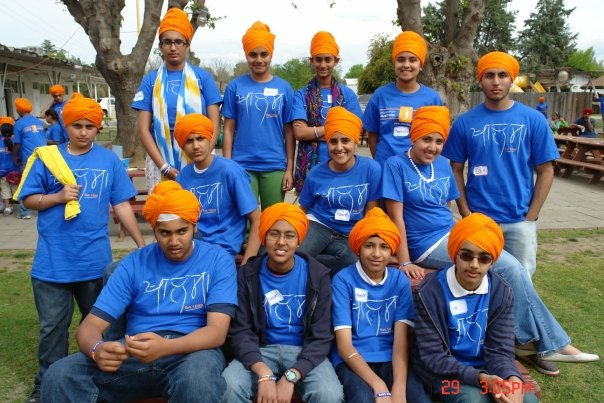 While the story gave only a brief explanation for the ceremony it got me thinking about the significance of the ceremony in the Sikh community in general: why we perform the ceremony, how wide spread it is, and how it pertains today to Sikh women.
While the story gave only a brief explanation for the ceremony it got me thinking about the significance of the ceremony in the Sikh community in general: why we perform the ceremony, how wide spread it is, and how it pertains today to Sikh women.
A couple of websites describe the ceremony like this:
People who have lived in India would know the turban tying ceremony known as Rasam Pagri (Turban Tying Ceremony). This ceremony takes place once a man passes away and his oldest son takes over the family responsibilities by tying turban in front of a large gathering. It signifies that now he has shouldered the responsibility of his father and he is the head of the family. [Source]
The explanation is a bit off –because the ceremony seems more for the passing of personal rather than family responsibility. While there may have been a time when the ceremony signified the passage of family leadership – I think in the Sikh faith the ceremony has come to signify the shouldering of personal responsibility for young Sikhs. The dastarbandi ceremony represents something different for Sikhs – it is as Guru Gobind Singh intended it – a stamp of identity for Sikhs and the responsibilities that being a Sikh entail.
From 7-Elevens to liquor and 99 cents stores, many Panjabi Sikh immigrants build a life for themselves as store workers. Working at these locations gives them a start in America, while engaging with its harsh realities. Regardless of educational background or the pind/shari divide, Panjabi Sikh immigrants work long hours into the night seven days of week trying to build a stable economic future for them and their families. On August 04, 2008, Inderjit Singh Jassal at the age of 62, was one of these Panjabi Sikh immigrants, who was murdered at a 7-11 store during his usual 13-hour shift in Phoenix, Arizona. Jassal had moved to the US nearly 20 years ago, while his wife and two adult children remained in India.
SALDEF reports that:
Mr. Jassal was working at a 7-11 store in West Phoenix when a black male, later identified as 27 year-old Jermaine Canada, walked in with his two children, aged 2 and 6. According to the surveillance video, the two individuals had a short conversation, at the end of which Mr. Canada pulled a concealed firearm from his shirt and fatally shot Mr. Jassal.
The most ironic aspect of this case is that no motive as been found. According to surveillance video there was no angry exchange between Jassal and Canada and nothing was stolen by the murderer.
SALDEF believes that this killing was nothing other than “… a heinous crime motivated by hate”.
According to one of Canada’s relatives, he had a history of drug abuse and mental illness. At the time of the killing, he was under supervised release following 2 years in prison for violating his probation, for a prior dug conviction, with a weapons charge.
Currently, Tajinder Singh Jassal, a nephew of Inderjit Singh Jassal and co-worker, is working to get immigration visas for Inderjit’s wife and children. He is considering sending an appeal letter to Arizona Senator John McCain’s Office for assistance with the visas because “The family is suffering right now. They want to see their father’s face.”
Guest blogged by Mewa Singh
I did not think I was going to write this post, but after seeing a post on the most popular South Asian American blog – Sepia Mutiny – by Amardeep Singh, I had to make a comment about Musharraf’s resignation to avoid impeachment.
For a quick primer on the career of the Pakistani dictator – Pervez Musharraf, watch the Al-Jazeera video:

Young Sikhs are extremely internet savvy. From the proliferation of videos on youtube to remixed dhadhi-jatha to an embrace of web 2.0, many young Sikhs are at the forefront of creating new avenues for education about their faith. While I personally believe that most Sikhs focus their attention on education for non-Sikhs, in my opinion, far more crucial is the intra-Sikh education.
 While in an earlier discussion I talked about the importance of the KhalsaKids website, launched last year by the Sikh Coalition. It is an example of Sikhs experimenting with new media forms to better address the needs and concerns of their community.
While in an earlier discussion I talked about the importance of the KhalsaKids website, launched last year by the Sikh Coalition. It is an example of Sikhs experimenting with new media forms to better address the needs and concerns of their community.
In a similar vein, the Sikh Research Institute has recently announced its plans for a “webinar” series, titled “Liv.”
Explaining the impulse of this new project, SikhRI head, Harinder Singh, states:
“We are regularly in touch with Sikh communities in North America, Europe and Asia who want us to deliver programs in their local communities on a regular basis, but it’s been quite difficult due to logistical and financial constraints. Now that we are introducing webinar facilities, our programs can reach anyone around the globe and we look forward to being able to engage with the vast Sikh communities outside of our traditional target area in North America”[link]
The “Liv” project entails four 90 minute seminars to begin at 8am PST (California time) on 4 consecutive Saturdays, beginning September 13, 2008. The first four topics listed on their website includes: “Sikhi – A Gurmat Framework,” “Bani – The Idea,” “Tavarikh (History) – The Revolution,” and “Rahit – The Lifestyle.”
A pre-registration is required to participate in the “webinar” and can be completed here.
While waking up at 8am on Saturdays is beyond my abilities, the seminars being conducted by The Harinder Singh sound intriguing and informative. I hope some of our readers can that do participate can discuss some of their thoughts on the format and the content here.
Also what are new ways that you have seen Sikhs embracing Web 2.0? (yes I am already aware of that one blog, uhhh but I can’t think of the name.)
I remember going to Nagar Kirtans and being awed by those doing Gatka (i.e. Sikh martial arts)! Their “performances” were eye-catching with action, discipline, determination, and spirituality. Watching Gatka helped me connect with Sikh history at a time when there were little resources around me to learn about Sikhi. This martial art gave me some insight into the concept of a “saint-solider” – one who exemplifies Miri/Piri (spiritual/temporal power). I got to see how a saint-solider physically fought to defend Sikhi.
Lately, I have heard people ask, “Is Gatka a “performance” or a “martial art”? I think the “performance” part of the question comes from those who think Gatka is being done more to please crowds than spiritually connect with Sikhi. Also, some think Gatka techniques are being compromised in order for it to be more “safe” for crowd performances? I personally think, Gatka is both a performance and a marital art, but that does not mean spirituality or technique has to be compromised. What do others think?
A recent BBC show on Gatka addressed how it is becoming a way for Diasporic youth to connect to their Sikh heritage, while focusing on physical fitness. It also touches on non-Sikhs participating in Gatka. Let us know what you think!
p.s. I have always found it empowering to see Sikh girls participating in Gatka, even though I rarely see women on Gurdwara management committees!
At one time Punjab Agricultural University (PAU) in Ludhiana, Punjab was THE agricultural university in Asia. Largely due to this university’s role in promoting the Green Revolution (fellow Langa(w)r-iters have described the Green Revolution’s darker sides, another monograph is by Vandana Shiva), students from throughout East Asia came to Ludhiana to study at PAU. In California, I have always been surprised to randomly meet some Chinese men that know Punjabi. However, here is an impressive Malaysian-Chinese man Kian You (AKA Karam Singh) that will leave your mouth wide open. He discusses the importance of continuing the Punjabi language and can even recite the first Pauri of Japji Sahib. On this Friday as many of us tune in to watch the Olympics in China, take a few minutes to watch this video of an ethnically Chinese man teach us about our maboli.
The Sikh Research Institute (SikhRI) reported today that Arpinder Kaur, 28, of San Antonio, Texas has become the first turbaned pilot hired by a commercial airline in the United States. As a Sikhni, she has helped pave the way for both Sikh men and women who wear a dastaar/turban to fulfill their passion for flying. No longer does flying just have to be an extra-curricular activity for these Sikhs, but it can also be an every-day job!
States. As a Sikhni, she has helped pave the way for both Sikh men and women who wear a dastaar/turban to fulfill their passion for flying. No longer does flying just have to be an extra-curricular activity for these Sikhs, but it can also be an every-day job!
In March 2008, after resolving the issue of wearing her dastaar on-the-job, with the help of the Sikh Coalition, Arpinder Kaur was officially hired by American Airlines Corporation (AMR) as a First Officer. She filed her grievance for accommodation of her religious article of faith based on American Airlines’ allowance of “regulation approved hats”. An agreement was reached that is consistent with state and federal anti-discrimination law. In June 2008 she finished her pilot training program and is now flying Embraer Jets for American Eagle, a regional airline that is part of AMR based out of the Dallas-Fort Worth International Airport.
When Arpinder Kaur was asked why she chose to do this, she said:
“Two of the reasons I did this were: first, my love of flying and, second, to set a precedent for the community so they know you can be in your Sikh appearance and do anything out there; so that my younger brothers and sisters [the rising generation] will pursue their passions while practicing their Sikh faith.”
Her passion for flying first started when at the age of 15 she got to sit in the cockpit of an airplane when moving from Panjab. Despite having a degree in Information Systems and her mother’s belief that it was too dangerous for a girl to be a pilot, Kaur has chosen to follow her passion; while using it as a means for supporting her family. Kaur said it was the love and support of her husband, Pritpal Singh that pushed her forward on the path toward becoming a pilot. Kulbir Singh Sandhu, captain with AMR mentored her throughout her aviation career. From 2003 to 2005 Kaur was trained by Jesse Sherwood in Kansas. With the help of these individuals and others along with her own perseverance and determination, Kaur and American Airlines have shown that accommodation and not assimilation is the way to harness the strength of diversity in America.
Harinder Singh, executive director of the Sikh Research Institute (SikhRI) in San Antonio, Texas said, “This is a great day for the Sikhs in America. Religious accommodation, not assimilation, is what the founders of this great nation envisioned and we are thrilled American Airlines celebrates the rich religious and cultural diversity of all American populations.”
Here is a short film on Arpinder Kaur and “piloting”:
Is your mom “chapter president” or a “member” of the local Sikh women’s Sukhmani Sahib club? Many Sikh women (generally those with Auntie status) are commendably coming together to form small groups who go to each other’s homes about once a month to do Sukhmani Sahib da paat to help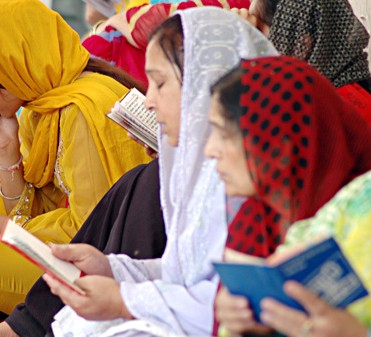 bring/remember peace. Sometimes there is a specific issue a woman’s family is encountering and at other times it just for general familial peace. Thus, our mothers and aunties get to socialize about their everyday lives and connect spiritually through sangat and paat! One of the many things we could learn from them about practicing Sikhi!
bring/remember peace. Sometimes there is a specific issue a woman’s family is encountering and at other times it just for general familial peace. Thus, our mothers and aunties get to socialize about their everyday lives and connect spiritually through sangat and paat! One of the many things we could learn from them about practicing Sikhi!
As International Day of Peace approaches on September 21st, these groups of Sikh women are being asked to come together to recite Sukhmani Sahib da paat. Sukhmani can be defined as counselor of peace or peace of mind with sukh meaning “peace” and mani meaning “mind”, “heart” or “jewel”. The entire paat/poem is known as the “jewel of peace” or “song of peace”. So if your mom belongs to one of these groups or is interested in joining/creating one, please let her know about this day of observance! Now she can do paat to help bring/remember peace in the world along with your well-being!
p.s. It’s always interesting about how many Sikh women are the focal points for spirituality in homes … but that’s another post! 
In light of the recent post on Punjabi classes in California high schools, I ran into this article in the Chronicle Herald about Sikh summer school:
A couple of years ago Aman Tut’s seven-year-old daughter asked her if she could wear a Christian cross. Tut was surprised because she and her husband are Sikhs… So they enrolled their girls in summer school at the Golden Triangle Sikh Association temple near Petersburg, just west of Kitchener.
The Tut family works weekends and isn’t able to attend the weekly Sunday services and school programs at their gurdwara. The local gurdwaras have come up with a really interesting model to augment their typical “Sunday school” courses.
Four years ago, organizers started a weekday program that runs from 4 p.m. to about 9 p.m. each day. Unlike most vacation Bible school programs that run for a week or two at many churches, kids attend the Sikh program from early July to the end of August… At the beginning of each class, about a dozen students take music lessons on instruments that are used during Sikh worship services. The boys learn to beat rhythms on tabla drums, and girls are taught the basics of the harmonium, an instrument resembling both a tabletop organ and an accordion. By 5 p.m. the majority of students have arrived for classes in Punjabi language, Sikh history and religion.
I don’t know if, as an adult, I would be able to make it to a class every day, but I really liked how the organization had set up their summer school classes, and I wonder if it could be extended or expanded into a “night classes” model for adults during the rest of the year, as well. It seems like a really helpful and interesting alternative to Sikh youth camps, which are often too short or lack enough context to help kids build long-term knowledge and skills. It also has the added benefit of being close to parents who may be concerned about sending their kids away but still want them to benefit from a religious education. What do you think, readers? Between high school programs and night courses, what model of instruction (and time commitment) would work for you, individually, and possibly for your child?
Langa(w)riters have posted in the past on issues surrounding the preservation of the Panjabi language here, here, and here. Be it anywhere from Panjab to North America, the preservation of the Panjabi language is intimately tied to the preservation of a Panjabi and Sikh heritage. For example, in a recent article on Live Oaks High School offering Panjabi courses, Mohinder Singh Ghag, director of Live Oaks Schools Foundation stated:
“The language is the only reason we have a link to our ancestors.”
Thus, the discussion around solutions has understandably centered around learning Panjabi in homes, gurdwaras, high schools and universities. I personally think having these learning opportunities available at all these different sites is a much-needed step towards maintaining the Panjabi language. I have always found the process of getting Panjabi classes taught in high schools particularly interesting because of how they require engaging the community, the reasons for creating them, and how they are incorporated into the public K-12 educational system.
For example, commendably in Live Oaks, California (located about 10 miles north of Yuba City, California):
Punjabi community members knocked on doors and made announcements in temples to get teenagers to sign a petition expressing interest in a Punjabi language class at Live Oak High School.
About 25 students signed-up.
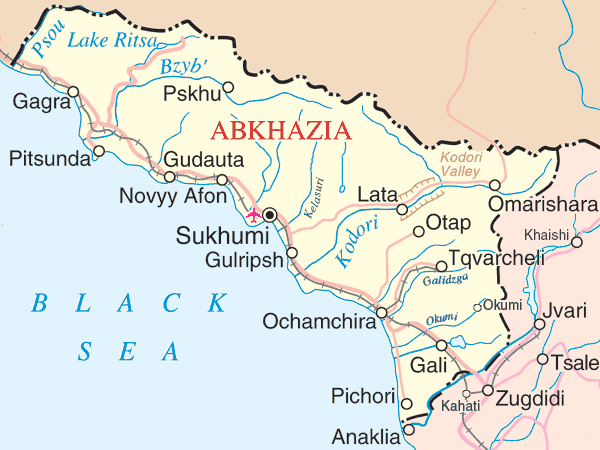
Like many, my family and I watched the opening ceremonies of the Olympics last night. In the middle of the parade of nations, the commentators off-handedly remarked that the country of Georgia had just been invaded by Russia, over an escalated territorial dispute (note that this region of the former-USSR has been the stage for other battles over nation and territory; the Chechen Republic is a close neighbor of Georgia on its northern border). Russia has launched a full military campaign involving air and ground troops and targeting the Georgian city of Gori (not located in the disputed region); this has already resulted in civilian injuries and deaths. Georgia has also asked for U.S. assistance in airlifting their troops from Iraq back home.
I can’t confess to know the entire back story; I’m terribly unfamiliar with Abkhazia and had no idea that hostilities had been mounting (beyond the “normal” level) between Georgia and Russia. In reading the NYT coverage this morning, I stumbled across this statement:
Georgian officials said their only way out of the conflict was for the United States to step in, but with American military intervention unlikely, they were hoping for the West to exert diplomatic pressure to stop the Russian attacks.
As familiar as I am with realpolitik, I was alarmed that the only “hope” for stabilization or a stop to the assault was U.S. intervention. This made me reflect on the concept of witness: in times of war, what does it mean to bear witness to an atrocity, but fail to intervene? In times of “peace,” what does it mean to acknowledge that human rights abuses take place, but fail to challenge a system that prioritizes compliance? What does our faith require in these moments? In these moments, what is justice, and what is our duty as a faith community that values justice and freedom?
So today will mark the opening of the Olympic Games. Some will cheer for their states; some will cheer for their heroes; some won’t care.
Well, here are FOURTEEN reasons to care: reasons that transcends national barriers and in many ways is more reflective of our Sikh-centered, globalized outlook. It is related to the fact that Sikhs from throughout the world congregate here at The Langar Hall and that issues ranging from Kenya, New Zealand, Canada, Panjab, England etc. all interest us
So in this spirit of continuing to foster a globalized Sikh diasporic community, I present to you the untold story of Punjabi Sikhs in the Olympics. The reason I am using the term ‘Punjabi Sikh’ is because I don’t really know how they identify themselves, but their names indicate that they come from a common ethnic stock – a Punjabi Sikh background.
I am trying to make this list comprehensive, so if I left anyone out, please feel free to post a comment and I will go back to add them. Let’s make this a project we do together, by posting their finishings and results. [also thank you to Mandeep Singh for correcting some of my mistakes]
Sikhs in the Olympics:
Sikhs are one of those great unknown Olympic stories. It is a diasporic story where Sikhs have representeed many countries and many continents. In the Beijing Olympics, there will be Sikhs (on as far as I could figure out using the wikipedia lists) coming from India and Canada. In years past, Sikhs have been included on teams from Kenya, Great Britain, and even Malaysia. From the regions of the five Olympic Rings (Blue – Europe, Yellow – Asia, Black – Africa, Green – Oceania, Red – Americas), Sikhs, including those in the diaspora have been at the center of many Gold medal winning teams – especially in field hockey. As far as individual glory, Milkha Singh “the Flying Sikh” disappointing fourth place finish in the Men’s 400M in the 1960 Rome Olympics.
Jathedar of the Akal Takht, Giani Joginder Singh Vedanti, resigned yesterday without providing any real reason for the step down. From reports it seems that the Jathedar was asked to resigned late Monday night 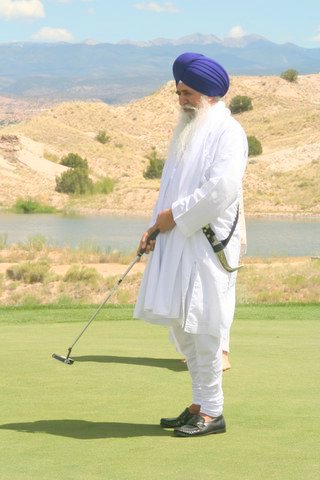 after some SGPC execs visited him at home – the apparent reason: differences of opinion with the Shromini Akali Dal (lead by Badal) and the SGPC (lead by Makkar). In an attempt to cover up the transparently obvious removal, the SGPC president, Avtar Singh Makkar attributed the resignation to Vedanti’s ill health. However, most sources reported something more along these lines:
after some SGPC execs visited him at home – the apparent reason: differences of opinion with the Shromini Akali Dal (lead by Badal) and the SGPC (lead by Makkar). In an attempt to cover up the transparently obvious removal, the SGPC president, Avtar Singh Makkar attributed the resignation to Vedanti’s ill health. However, most sources reported something more along these lines:
It is understood that Vedanti’s increasing proximity with hard liner Sikh organizations on the issue of Dera Sacha Sauda and his public opinion to vote for Sikh Prime Minister Dr. Manmohan Singh during UPA government’s trust vote on July 22 last were key factors that compelled SGPC to pack up Vedanti. The reports said that Punjab Chief Minister Parkash Singh Badal had told Vedanti to quit else he will be expelled.
After reading about Jathedar Vedanti removal and the circumstances, (like many others) I am a bit confused and disturbed with the recent trend – Jathedar Vedanti’s removal is not a first:
The removal of Bhai Jasbir Singh Rode as the Akal Takht Jathedar started the trend of sacking Jathedars. Previously, a Jathedar either resigned or died in office.
Bhai Ranjit Singh, the daring Jathedar of Akal Takht was sacked on April 28,1998 and SGPC installed Giani Puran Singh as the new Jathedar on February 15,1999. Vedanti was appointed as acting Jathedar of Akal Takht on March 28, 2000 after the SGPC then led by Bibi Jagir Kaur blamed Giani Puran Singh of violating the maryada (Sikh code of conduct) and sacked him.
I think what makes this most unsettling is the fact that the Jathedar of the Akal Takht is supposed to be given a certain degree of credibility and authority. The Jathedar is a Sikh leader; someone who represents our interests, is our ambassador, and serves as a guide to Sikhs worldwide. I’m not giving him/her Papal status by any means, but the Jathedar’s position is an executive role within the Panth and removal at the whim and fancy of often corrupt officials in the SGPC or the SAD illegitimates any credibility the position once held. The fact that the last four Jathedars have been “removed” by the SGPC/SAD & Co. says a great deal about the way our Panth is run…little of which can be construed in a positive light.
In a recent post, Camille asked important questions around growing Sikh female leadership/representation, rather than just “managing” it. At the heart of leadership in any organization is decision-making. A critical component of growing Sikh female-leadership/representation is giving access to decision-making spaces that are commonly occupied by Sikh men and incorporating female perspectives into decision-making. Thus, you will see the strongest battles for gender equity in Sikh organizations tend to be fought around decision-making power. A recent example of such a battle was at a Gurdwara in Bristol, U.K. where two factions were fighting over allowing women to take part in Gurdwara elections. Women were demanding the right to vote while also running for committee-member seats. This past Sunday during Gurdwara management-committee elections, both factions broke out into a riot over allowing 79 women to vote past the registration deadline.
According to the Daily Mail:
Six riot vans were dispatched to close the road in Fishponds, Bristol, and one man was arrested and cautioned for a public order offence during the seven-hour stand-off.
Voting finally finished at 4pm and resulted in three women being voted onto the management committee for the first time in the temple’s history.
The trigger for the riot was when one man frustrated by the situation started trouble inside the Gurdwara that spilled out onto the street where “women were blocking his car and trying to push it over while he was still inside clinging to the steering wheel”.
An elderly women at the site reported “… a crowd of mainly women and children stood on one side of the road and men on the other. They were fronting each other up and shouting abuse across the road. The women were screaming ‘we’re not going anywhere’.
When I was an undergraduate, I had the opportunity to attend the World Sikh Council – North America Region‘s conference on Women in Sikhi. The conference hosted panelists and speakers to discuss three broad categories: the depiction of women in Scripture (SGGS Ji), the treatment of women in the Rehit Maryada, and future possibilities/actions for promoting gender equity. The WSC, like many Sikh institutions, was heavily male-dominated at the time, although the conference liaisons did an admirable job trying to recruit a diverse panel of women to organize, speak, and develop the program. Nonetheless, the majority of conference attendees (until the very last panel) identified as men, and there was no conversation around the agency of men as allies in the struggle for gender equity. It’s always easier to criticize than construct, and I do think the conference was an important initial step; the organizers’ hearts were in the right place, and they were certainly attempting to place women at the center of the conversation.
What I found most distressing, however, was the deep level at which the “proper role” of women in Sikhi was gendered. In emphasizing the valuation of women, most speakers and commenters focused on the following passage from SGGS Ji (p. 473):
Woman becomes his friend; through woman, the future generations come.
When his woman dies, he seeks another woman; to woman he is bound.
So why call her bad? From her, kings are born.
From woman, woman is born; without woman, there would be no one at all.
Instead of focusing on the deeper meaning of this passage — that woman is a unique and necessary partner in the faith and in humanity –, most speakers placed the significance of women solely in the context of motherhood. As a result, the impact of women’s leadership is often reduced to a single meme: woman as cultural vessel — the bearer of children (Mata) and imparter of religious knowledge and instruction. This highly gendered role and image severely limits how we conceive of the role of women, both as public figures and speakers, but also in terms of their “value-added” to society.
This recent article about a granthi in Leeds suing for unfair dismissal brought me back to the topic of granthis in general. Given Sikhi’s very clear edict AGAINST the institution of a clergy, I always found it distressing to see whole gurdwaras managed and oragnized by hired granthis. If a sangat (or gurdwara) was too big to function on seva, hadn’t it possibly grown beyond its equilibrium? I always felt uneasy about high-profile (and high cost!) guest granthis, specialized sermons, and other performance-based methods in the gurdwara. Not to mention really distressed that lecturing and sermonizing often extended services and, in my opinion, often drew away from time spent in reflection around kirtan.
It also seems, to me, that the formal establishment (and acceptance) of granthis as “ordained” disciples of Sikhi encourages the creation of a laity. In theory, shouldn’t all Sikhs be capable of organizing and leading their own services? Shouldn’t we encourage everyone to achieve the literacy and familiarity necessary to comfortably participate in shabad kirtan, ardaas, and the basic requirements of langar? In the U.S., we absolutely do not provide sufficient resources to ensure this across sangats (some sangats are notable exceptions, e.g., the Beavercreek, OH, sangat, which is completely volunteer-run with no granthis, despite a population of <50 Sikhs). If we wanted to help mobilize Sikhs to be able to run their own gurdwaras, what kind of resources would we need to provide?
I understand that once we employ granthis there’s an implicit contract and deferral to their “wisdom,” but to what extent are we eroding our own personal understanding and potential for discussion, debate, and growth within Sikhi and within our own sangats? I have heard some liken granthis to spiritual guides; I would argue, however, that SGGS Ji is our guide, the Rehit Maryada our manual, and the sangat our laboratory for refining our understanding.
All the headlines are centered on the news of the capture of Bosnian Serb wartime president, Radovan Karadzic. Karadzic has been indicted for genocide in the Bosnia war. Apprehended by government officials, a change in political winds in Serbia now-seeking EU membership has allowed for the present Serbian government to capture the thirteen-year fugitive. The world is now waiting for Karadzic to be transferred to The Hague to  face trial.
face trial.
Karadzic’s soon-expected extradition and last week’s International Criminal Court (ICC) prosecutor request that genocide charges should be brought against Sudanese President Omar al-Bashir for state-sponsored pogroms in the Darfur region of Sudan is being watched the world over.
Karadzic’s arrest led to one Munira Subasic, head of a Srebrenica widow’s association (for more information on the Srebrenica Genocide/Massacre, click here), stated
“[Karadzic’s arrest] is confirmation that every criminal will eventually face justice.” [link]
I hope Subasic’s comments ring true. While I celebrate the capture of one tyrant, as a Sikh, my attention wanders (as it tends to) to the situation in Punjab and the Indian State.
What is American religious tradition and how does it influence the practice of Sikhi in the US?
Recently, the Pew Forum on Religion and Public Life surveyed nearly 36,000 people of various religions (including no affiliation/atheists) with questions about their religious beliefs. Questions addressed whether individuals believed in a literal interpretation of scripture, the strength of adherents’ belief in God or universal spirit, views of one’s religion as the one true faith, as well as social and political beliefs. More information and results of the survey can be found here.
Some think the findings expose a superficiality in the practice of faiths in the US.
“Religion in America is 3,000 miles wide, but it’s only 3 inches deep,” said Professor D. Michael Lindsay, a sociologist and religion demographer at Rice University. “The issue is not that Americans don’t believe in anything. It’s that they believe in practically everything. It’s possible for Americans to hold together contradictory beliefs at the same time.” The survey found that there are Catholics who meditate, while Lindsay said other surveys have found Protestants who pray to the Virgin Mary. [link]
 One might question this conclusion that because a person holds contradictory beliefs, it means they only superficially understand/practice their religion. It may just mean that people are trying to reconcile science, their experiences, or contradictory moral beliefs with specific tenets of their own religion. The fact that they continue to hold the belief that religion proposes despite contradictory experience or scientific finding shows faith, and in my opinion, commitment.
One might question this conclusion that because a person holds contradictory beliefs, it means they only superficially understand/practice their religion. It may just mean that people are trying to reconcile science, their experiences, or contradictory moral beliefs with specific tenets of their own religion. The fact that they continue to hold the belief that religion proposes despite contradictory experience or scientific finding shows faith, and in my opinion, commitment.
A recent French decision brings debates about multiculturalism and accommodation back into focus. France’s highest administrative court prevented the wife of a French national and mother of 3 French- born children from obtaining French citizenship based purely on her wearing of a niqab– for “insufficient assimilation” into France:
…last month, France’s highest administrative court upheld a decision to deny citizenship to Ms. Silmi, 32, on the ground that her “radical” practice of Islam was incompatible with French values like equality of the sexes. [link]
The decision received support from some French-Muslim officials who do not support women’s wearing of niqabs.
niqabs.
The ruling on Ms. Silmi has received almost unequivocal support across the political spectrum, including among many Muslims. Fadela Amara, the French minister for urban affairs, called Ms. Silmi’s niqab “a prison” and a “straitjacket.” “It is not a religious insignia but the insignia of a totalitarian political project that promotes inequality between the sexes and is totally lacking in democracy,” Ms. Amara, herself a practicing Muslim of Algerian descent, told the newspaper Le Parisien in an interview published Wednesday. [link]
There are major differences between the niqab and Sikh religious dress. The objection to the niqab that it’s incompatible with the French value of equality of the sexes doesn’t carry over to Sikh dress. The dastaar or pag doesn’t pose the same dilemma as both men and women may wear it, and it is not seen as an inhibition on gender equality generally.



